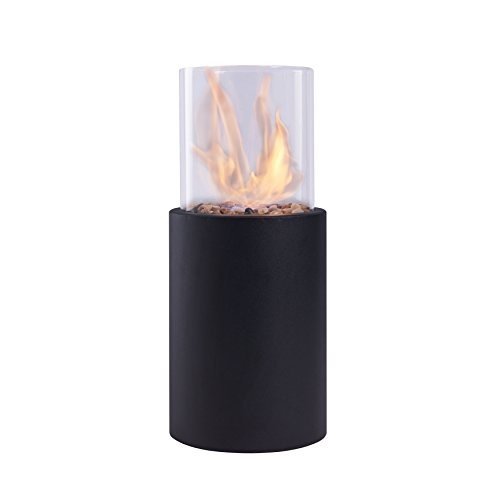
fireplace5408
About fireplace5408
Embracing Warmth: The Allure of Large Fireplaces
Large fireplaces have long stood as symbols of comfort, luxury, and architectural elegance. These magnificent structures not only serve as a primary heat source but also act as a captivating focal point in homes, enhancing both aesthetic appeal and gathering dynamics. This article explores the many dimensions of large fireplaces, from their historical significance to modern designs, maintenance tips, and frequently asked questions.
Historical Significance of Fireplaces
Fireplaces have transformed significantly over centuries. Historically, they were essential for cooking, heating, and lighting. Early designs often consisted of large openings in the walls of homes, filled with wood, which allowed for an open flame. As time progressed, the function of the fireplace evolved, aligning more with social and decorative purposes than pure utilitarian needs.

Key Historical Milestones
- Ancient Times: Fire pits or rudimentary hearths were common, primarily for cooking and warmth.
- Middle Ages: The introduction of the chimney allowed smoke to escape, making indoor living more pleasant.
- Renaissance: Fireplaces And Stove became ornate, featuring intricate designs and serving as a status symbol.
- Modern Era: Large fireplaces are now architectural masterpieces, often designed with stone, brick, or modern materials.
Benefits of Large Fireplaces
Large fireplaces provide an array of advantages, both functional and aesthetic. The following list highlights some of these benefits:
Functional Benefits
- Efficient Heating: They can heat larger spaces effectively, providing comfort during cold months.
- Versatile Fuel Options: Homeowners can choose from wood, gas, or electric options, catering to personal preferences.
- Indoor Air Quality: Modern wood-burning fireplaces are equipped to minimize smoke emissions and improve air quality.
Aesthetic Benefits
- Focal Point: A large fireplace can serve as a centerpiece in a living room, drawing attention and enhancing decor.
- Design Versatility: Various materials (stone, brick, metal) allow personalization to match any interior style, from rustic to modern.
- Mood Creation: The ambiance created by a crackling fire fosters warmth, relaxation, and social interaction.
Types of Large Fireplaces
With numerous styles and designs available, choosing the right type of large fireplace can elevate a home’s overall appeal. The following table outlines some popular types of large fireplaces:
| Fireplace Type | Description | Key Features |
|---|---|---|
| Traditional Wood-Burning | Classic style, often made of brick or stone, requiring a chimney. | Authentic experience, crackling sound, aroma of burning wood. |
| Gas Fireplace | Offers convenience with instant heat. Can be vented or ventless. | Easy to operate, cleaner than wood, suitable for modern designs. |
| Wood Stove | Enclosed unit primarily designed for efficiency. | High heat output, energy-efficient, can be freestanding or built-in. |
| Electric Fireplace | A realistic-looking flame effect without actual combustion. | Safe to use, does not require venting, suitable for all rooms. |
| Bioethanol Fireplace | Eco-friendly option, burns bioethanol to produce flame. | No flue required, portable, effective for both indoor and outdoor use. |
Designing a Large Fireplace
When contemplating a large fireplace, several design elements should be considered to ensure it complements the space while enhancing functionality.
Key Design Considerations
- Location: Central placement in the room optimizes heat distribution and provides a natural gathering spot.
- Material Selection: Choose materials that align with the home’s overall aesthetic. Stone conveys rustic charm, while sleek metal suits a contemporary setting.
- Size Proportions: The fireplace should be proportionate to the room size—too large can overwhelm, while too small may lack presence.
- Mantels and Surrounds: Incorporate a mantelpiece to display personal items or holiday décor; a well-crafted surround adds elegance.
Additional Features
- Built-in Seating: Incorporating built-in benches around the fireplace creates intimate conversation areas.
- Lighting: Accent lighting can enhance the fireplace’s features, making it stand out even when not in use.
- Access to Fuel Storage: Ensuring easy access to firewood or gas supply is critical for functionality.
Maintaining Your Large Fireplace
A fireplace can last a lifetime with proper maintenance. Here are some essential tips:
Maintenance Checklist
- Regular Inspection: Check for cracks, creosote buildup, and integrity of the chimney.
- Cleaning: Clean the firebox and chimney to prevent dangerous blockages and reduce fire risks.
- Professional Servicing: Schedule annual inspections by a certified technician for gas and wood-burning fireplaces.
- Proper Ventilation: Ensure that the flue operates efficiently to remove smoke and gases.
FAQs about Large Fireplaces
What size fireplace is appropriate for my room?
The size of your fireplace should correspond to the dimensions of the room, generally allowing for at least 12-18 inches of clearance on either side.
Are large fireplaces energy-efficient?
Modern advancements have led to the development of energy-efficient models that provide substantial heat while minimizing energy consumption. Always check the efficiency rating when choosing a type.
Can I burn wood in a gas fireplace?
No, gas fireplaces are specifically designed to work with gas and burning wood can cause significant damage and may pose safety risks.
How often should I clean my fireplace?
Frequency of cleaning can depend on usage. However, a good rule of thumb is to have your fireplace cleaned at least once a year and inspected regularly.
Can I install a fireplace in an existing home?
Yes, most homes can accommodate a fireplace, though it may require professional installation, and should comply with local codes and regulations.
Large fireplaces hold a timeless appeal, marrying utility with beauty in a way few architectural features can. They serve as more than just a source of heat; they foster connection and relaxation, creating intimate spaces for family and friends. By considering different styles, maintenance needs, and design elements, homeowners can select the perfect large fireplace to enhance their living environment, ensuring warmth and comfort for years to come.
No listing found.
